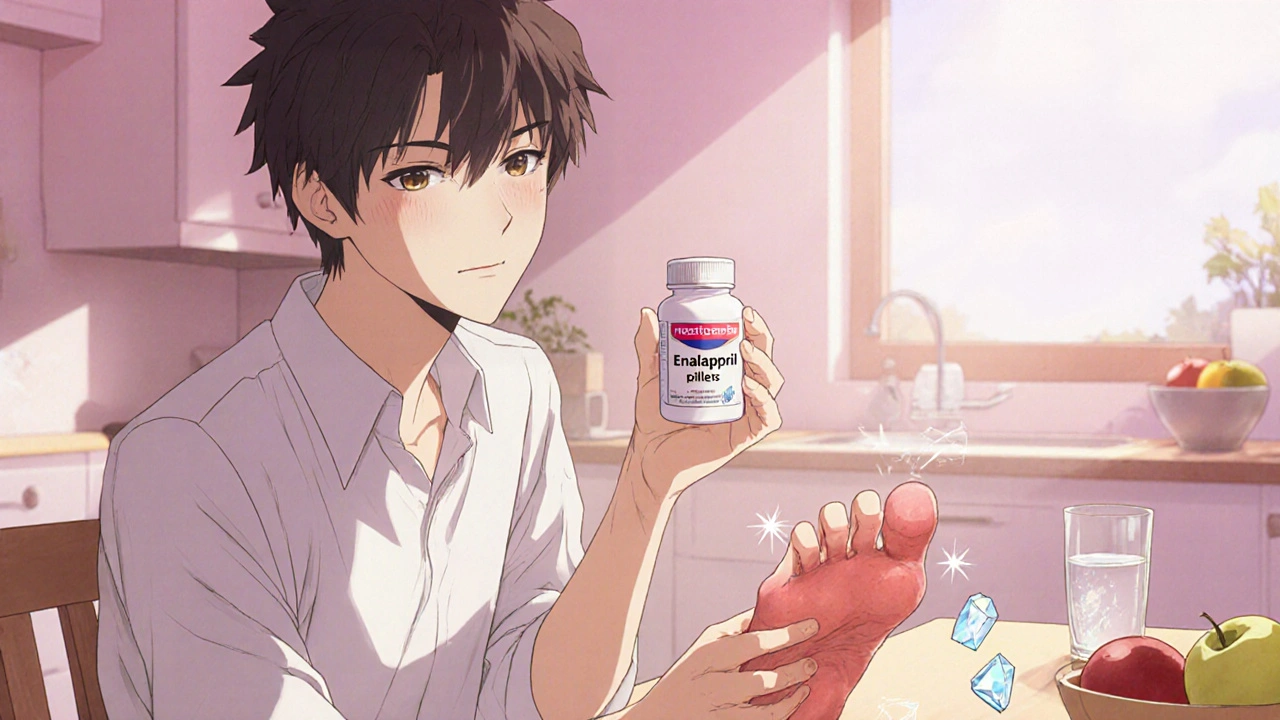Gout: Causes, Triggers, and How to Manage It Naturally
When your big toe suddenly swells up, burns, and feels like it’s been hit by a hammer, you’re likely dealing with gout, a form of inflammatory arthritis caused by high levels of uric acid in the blood. Also known as metabolic arthritis, it doesn’t just hurt—it limits how you move, work, and even sleep. Gout isn’t just about eating too much steak or drinking too much beer. It’s a deeper metabolic issue tied to how your body processes purines, breaks down uric acid, and clears it from your joints.
Uric acid is the main villain here. When it builds up, it forms sharp, needle-like crystals in your joints—usually the big toe, but also ankles, knees, and fingers. These crystals trigger intense inflammation, which is why the pain hits so fast and hard. But why does uric acid pile up? For some, it’s genetics. For others, it’s kidneys that don’t flush it out well. And for many, it’s a mix of diet, weight, and lifestyle. Uric acid, a waste product formed when the body breaks down purines in food isn’t the problem by itself—it’s the overload that turns it into a problem.
What you eat matters more than you think. Foods like red meat, organ meats, shellfish, and sugary drinks—especially those with high-fructose corn syrup—push uric acid levels higher. On the flip side, cherries, low-fat dairy, coffee, and plenty of water can help lower them. Gout diet, a dietary approach focused on reducing purine intake and promoting uric acid excretion isn’t about starving yourself—it’s about swapping out the worst offenders for foods that actually help your body heal.
Flares don’t come out of nowhere. Alcohol, dehydration, sudden weight loss, and even stress can trigger them. Some meds, like diuretics, can make it worse. And if you’ve had one flare, you’re far more likely to get another. That’s why managing gout isn’t just about painkillers during a flare—it’s about daily habits that keep uric acid low before the next attack hits.
There’s no magic pill that cures gout, but there are proven ways to reduce flares and protect your joints long-term. Some people need daily medication like allopurinol to lower uric acid. Others find relief with simple changes: drinking more water, cutting out soda, losing a few pounds, and avoiding late-night burgers. The key is consistency. One bad meal won’t ruin everything—but a string of them will.
You’ll find real stories here—how people cut their flares in half by changing their breakfast, why some swear by cherry juice, and what actually works when the pain hits hard. We cover what to eat, what to avoid, how to spot early signs of a flare, and what to do when your doctor says, "Just take the pill." This isn’t theory. It’s what people are using right now to take back control.
Enalapril and Gout: Can This Blood Pressure Pill Trigger Flare‑Ups?
Explore if Enalapril can cause gout flares, learn the science, risk factors, and how to manage pain while staying on the blood‑pressure medication.

